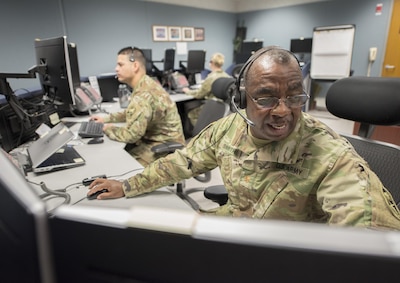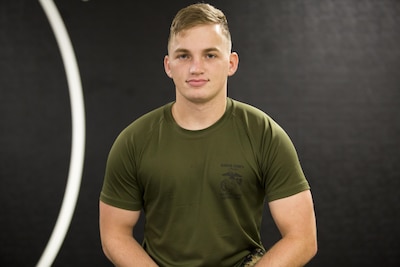By Sean Kimmons Army News Service
FORT GREELY, Alaska, Oct. 11, 2017 — A small, remote Alaskan
post bordered by mountains and moose herds, Fort Greely is America's major line
of defense against long-range enemy rockets.
Inside its heavily guarded missile defense complex, rows of
ground-based interceptor missiles tucked away in underground silos and radars
dot the landscape. Within minutes, the missiles can blast off into space to
collide with and destroy warheads speeding toward U.S. soil.
Using data from sea-, land- and space-based sensors,
soldiers of the 49th Missile Defense Battalion can spot a rocket launch from
anywhere in the world. If an attack occurs, the 100th Missile Defense Brigade
in Colorado Springs, Colorado, would then relay permission for the battalion to
fire.
A number of recent rocket launches have originated from
North Korea, which has threatened it could strike the U.S. with an
intercontinental ballistic missile -- a powerful rocket capable of hitting a
target with a nuclear weapon. Despite the new threats, Army Lt. Col. Orlando
Ortega, the battalion commander, said his well-trained Alaskan National Guard
unit operates in a constant state of readiness.
"We've always been ready," he said. "Nothing
really has changed from what we did a year ago. We were ready then and we're
ready now."
Still, North Korea has kept the soldiers busy.
Ever-Ready
The battalion has missile defense crew members who work
12-hour shifts around the clock so they can immediately react if a foreign
country launches a rocket.
A five-person crew will staff a fire control node at all
times. There, soldiers have several computers, monitors and communication
equipment to stay informed or relay any new developments. It's also where
soldiers can launch an interceptor missile to defeat an enemy rocket, if
approved to do so.
By the end of the year, the U.S. military is expected to add
eight more interceptors to its arsenal for a total of 44. The vast majority --
40 -- will be based at Fort Greely and the rest at Vandenberg Air Force Base,
California.
At Greely, crews train constantly in case they have to fire
one or more of the missiles. Such training can include practicing real-life
scenarios or learning complex software systems. Those skills are then tested by
internal and external evaluations.
"We will do everything we can to get to the top of our
game and maintain that level of proficiency at all times," said Army Maj.
Bernard Smith, director of the Alpha crew.
Team building is also paramount for soldiers because of the
consequences of failing to work as a crew. While confined together in a
one-room node, the bond among crew members can grow strong.
With a diverse team of skilled soldiers from Alaska to
Puerto Rico, Smith said, his crew is supportive and will often teach each other
new things during shifts.
"I'm not very stressed when I come into work because I
trust my crew -- we are a family," Smith, 50, said. "If there are any
issues or problems, they know we can come together as a crew, as a family, and
accomplish anything."
Arctic Living
One of the major's crew members, Army Capt. Gilberto Ortiz,
described the battalion -- made up of soldiers on Active Guard Reserve status
-- as a brotherhood.
About eight years ago, Ortiz left the warm climate of Puerto
Rico for the arctic cold to protect the complex from intruders as a military
police officer. When he heard of the missile defense crews, he decided to
switch careers.
"It was something new [to me], something I didn't know
about," said Ortiz, 32, who is now the crew's battle analyst. "I was
like, 'OK, I'll do it. I'm up for the challenge.'"
Before coming on board, his first challenge when he arrived
at Fort Greely was battling the weather, which can drop down to 60 below in the
winter. He learned how to wear layers, he said, and eventually acclimatized to
the cold. He even earned the "Arctic" uniform tab after he graduated
from the nearby Northern Warfare Training Center, which tests the cold-weather
skills of soldiers.
"The longer you stay here, the more you feel you are at
home," said Ortiz, who lives with his wife and two children at Fort
Greely. "[My] true home is thousands of miles away, but for me this is my
second home."
When she landed her assignment in Alaska, Sgt. Bethany
Hendren was eager to leave Missouri and head up north.
"I fell in love with Alaska before I got here, because
I love to travel and go to new places," Hendren, 29, said.
Similar to Ortiz, the sergeant was originally an MP and
chose to change career fields while at Fort Greely. She now works as the crew's
communications operator, where she monitors and reports all radio traffic on
the ground-based fire control system. While off-duty, she has another mission
to help serve fellow soldiers as the local president of the Better
Opportunities for Single Soldiers program.
Being isolated in Alaska -- which only has a few hours of
sunlight during the winter -- can sometimes impact a person's well-being. So,
Herndon reaches out to soldiers and invites them to events, where they can be
more active and social.
"It is an austere environment, and the winter months
can be quite demanding at times," she said, "but I offer different
programs and events for soldiers to be involved in and to get out there and see
Alaska."
Self-Sustaining Base
Fort Greely's infrastructure was made to be resilient, too.
The post is self-sustaining with its own water supply and power plant, so
operations won't be affected if electricity is cut to surrounding areas.
Security measures and sophisticated sensors can pick up any
movement around the complex. Even when a moose or another animal triggers a
sensor, MPs will always check it out.
"We take anything that comes in as a possible
intrusion," Ortega said, "and we will have eyes on it physically and
with cameras to ensure that it is not someone trying to come on."
All of these precautions go into being able to complete an
incredibly difficult mission, where even the slightest miscalculation can
result in failure.
Once an interceptor is launched, it releases a kill vehicle
that travels roughly 15,000 mph in space and is maneuvered to collide with an
enemy warhead.
"It is extremely hard to hit a bullet with a
bullet," Ortega said.
The Missile Defense Agency tests interceptors out of
Vandenberg. While there have been past successful hits on targets in space,
several interceptors can be fired at the same time, if necessary, to ensure an
enemy warhead is shot down.
'We're the Shield'
"We have confidence in the missiles and the
capability," Ortega said, "but we will ensure with 100-percent
confidence that it is destroyed." That's a promise the entire battalion
must keep, since over 320 million Americans depend on it.
As the lowest-ranking member of her crew, Herndon -- just
like the other soldiers -- has embraced the huge responsibility of defeating a
warhead if the time comes.
"We don't want Los Angeles or Seattle or any other part
of our country to be attacked. It's as simple as that," she said.
"Of course we have our offense ready to go as well, but
we're the only defense out there that can actually stop and prevent it from
coming into our country," she added. "We're the shield."









